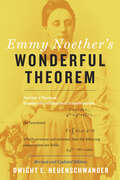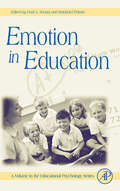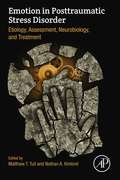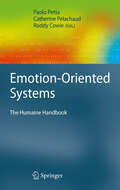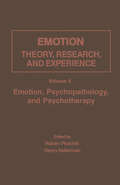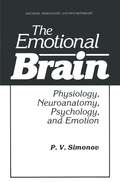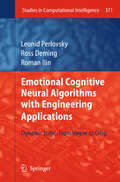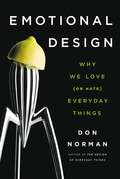- Table View
- List View
Emmy Noether's Wonderful Theorem
by Dwight E. Neuenschwander"In the judgment of the most competent living mathematicians, Fräulein Noether was the most significant creative mathematical genius thus far produced since the higher education of women began."â€�Albert EinsteinThe year was 1915, and the young mathematician Emmy Noether had just settled into Göttingen University when Albert Einstein visited to lecture on his nearly finished general theory of relativity. Two leading mathematicians of the day, David Hilbert and Felix Klein, dug into the new theory with gusto, but had difficulty reconciling it with what was known about the conservation of energy. Knowing of her expertise in invariance theory, they requested Noether’s help. To solve the problem, she developed a novel theorem, applicable across all of physics, which relates conservation laws to continuous symmetriesâ€�one of the most important pieces of mathematical reasoning ever developed.Noether’s "first" and "second" theorem was published in 1918. The first theorem relates symmetries under global spacetime transformations to the conservation of energy and momentum, and symmetry under global gauge transformations to charge conservation. In continuum mechanics and field theories, these conservation laws are expressed as equations of continuity. The second theorem, an extension of the first, allows transformations with local gauge invariance, and the equations of continuity acquire the covariant derivative characteristic of coupled matter-field systems. General relativity, it turns out, exhibits local gauge invariance. Noether’s theorem also laid the foundation for later generations to apply local gauge invariance to theories of elementary particle interactions. In Dwight E. Neuenschwander’s new edition of Emmy Noether’s Wonderful Theorem, readers will encounter an updated explanation of Noether’s "first" theorem. The discussion of local gauge invariance has been expanded into a detailed presentation of the motivation, proof, and applications of the "second" theorem, including Noether’s resolution of concerns about general relativity. Other refinements in the new edition include an enlarged biography of Emmy Noether’s life and work, parallels drawn between the present approach and Noether’s original 1918 paper, and a summary of the logic behind Noether’s theorem.
Emotion: New Psychosocial Perspectives
by Candida Yates David W. Jones Shelley Day Sclater Heather PriceThis unique collection provides a psychosocial approach to emotion, exploring the emotional undercurrents of everyday phenomena as diverse as war reporting, advertising, education, criminality, public policy and motherhood, and including contributors from sociology, psychology, cultural and media studies, and psychoanalytical studies.
Emotion and the Contemporary Museum: Development of a Geographically-Informed Approach to Visitor Evaluation
by Candice P. Boyd Rachel HughesThis book outlines a geographically-informed method of evaluating the emotional impact of museum exhibits. The authors have personally developed the method they describe over several years of working with the Museo Laboratorio della Mente in Rome and the Melbourne Museum in Australia. Informed by non-representational theories in cultural geography, this book offers solutions to museum staff for how they might evaluate aspects of visitor experience, such as emotions and embodied experience, which can be very difficult to assess using conventional approaches.
Emotion in Education (ISSN #Volume .)
by Gary D. Phye Paul Schutz Reinhard PekrunThis edited book examines some of the current inquiry related to the study of emotions in educational contexts. There has been a notable increased interest in educational research on emotions. Emotion in Education represents some of the most exciting and current research on emotions and education, and has the potential to impact research in this area. This combination of variety, timeliness, potential for transformation of the field, and uniqueness make this a "must-have" resource for academics in the fields of education, educational psychology, emotion psychology, cultural psychology, sociology, and teacher education. The chapters have been written for scholars in the area, but authors also wrote with graduate students in mind. Therefore, the book is also be a great volume for graduate seminars. Provides in-depth examination of emotions in educational contexts Includes international roster of contributors who represent a variety of disciplines Represents a number of different research approaches
Emotion in Group Decision and Negotiation (Advances in Group Decision and Negotiation #7)
by Bilyana MartinovskyThe volume offers an exploration of methods for analysis of emotion in negotiation, such as cognitive modeling, discourse analysis, all testing, subsequent multidimensional scaling, impression rating, and graph modeling for conflict resolution, reasonable and unreasonable disagreement.It covers activities, such as business negotiation, conflict solving, bargaining, task management meetings, discussions, and elaborates on different kinds of emotions. Some emotions stimulate negotiation (e.g. empathy), others -hinder it (e.g. disgust). However, all emotions open a door to uncertainty in relations and negotiation, which in turn provides an opportunity. The volume views language in negotiation not only as a vehicle for transmission of thought but also as a manifestation of emotion and the ethical.
Emotion in Posttraumatic Stress Disorder: Etiology, Assessment, Neurobiology, and Treatment
by Matthew Tull Nathan KimbrelEmotion in Posttraumatic Stress Disorder provides an up-to-date review of the empirical research on the relevance of emotions, such as fear, anxiety, shame, guilt, and disgust to posttraumatic stress disorder (PTSD). It also covers emerging research on the psychophysiology and neurobiological underpinnings of emotion in PTSD, as well as the role of emotion in the behavioral, cognitive, and affective difficulties experienced by individuals with PTSD. It concludes with a review of evidence-based treatment approaches for PTSD and their ability to mitigate emotion dysfunction in PTSD, including prolonged exposure, cognitive processing therapy, and acceptance-based behavioral therapy.Identifies how emotions are central to understanding PTSD.Explore the neurobiology of emotion in PTSD.Discusses emotion-related difficulties in relation to PTSD, such as impulsivity and emotion dysregulation.Provides a review of evidence-based PTSD treatments that focus on emotion.
Emotion in the Human Face: Guidelines for Research and an Integration of Findings
by Paul Ekman Wallace V. Friesen Phoebe EllsworthEmotion in the Human Face: Guidelines for Research and an Integration of Findings reviews research findings about the link between the face and emotion and provides some guidelines for study of this complicated but intriguing phenomenon. Some of the conceptual ambiguities that have hindered research and the methodological decisions that must be made in planning research on the face and emotion are discussed. How past investigators handled these matters is presented critically, and a set of standards is offered. This book is comprised of 21 chapters and begins with an overview of questions about how the face provides information about emotion, with emphasis on evidence based on scientific research (largely in psychology). The reader is then introduced to conceptual ambiguities and methodological decisions related to research on the face-emotion connection (including sampling), along with some important research findings. In particular, emotion categories and dimensions that observers can judge on the basis of facial behavior are analyzed, and whether such judgments can be accurate. The similarities and differences in facial behavior across cultures are also considered, along with the relative contribution of facial behavior and contextual information to the judgment of emotion. This monograph is intended primarily for students of psychology, anthropology, ethology, sociology, and biology, as well as those planning or already conducting research on the face.
Emotion in the Mind and Body (Nebraska Symposium on Motivation #66)
by Maital Neta Ingrid J. HaasAs the 66th volume in the prestigious Nebraska Series on Motivation, this book focuses on understanding emotion and motivation as two factors that not only influence social and cognitive processes, but also shape the way we navigate our social world. Research on emotion has increased significantly over the past two decades, pulling from scholarship in psychology, neuroscience, medicine, political science, sociology, and even computer science. This volume is informed by the growing momentum in the resulting interdisciplinary field of affective science, and examines the role of emotion and motivation in our perceptions, decision-making, and social interactions, and attempts to understand the neurobiological mechanisms that support these processes across the lifespan in both healthy and clinical populations. Included among the chapters: Emotion concept development from childhood to adulthoodEvolving psychological and neural models for the regulation of emotionPathways to motivational impairments in psychopathologyA valuation systems perspective on motivationReproducible, generalizable brain models of affective processes Emotion in the Mind and Body is a comprehensive and compelling rendering of the current state of the interdisciplinary field of affective science, and will be of interest to researchers and students working in psychology and neuroscience, as well as medicine, political science, and sociology.
Emotion-Oriented Systems: The Humaine Handbook (Cognitive Technologies)
by Roddy Cowie, Catherine Pelachaud and Paolo PettaEmotion pervades human life in general, and human communication in particular, and this sets information technology a challenge. Traditionally, IT has focused on allowing people to accomplish practical tasks efficiently, setting emotion to one side. That was acceptable when technology was a small part of life, but as technology and life become increasingly interwoven we can no longer ask people to suspend their emotional nature and habits when they interact with technology. The European Commission funded a series of related research projects on emotion and computing, culminating in the HUMAINE project which brought together leading academic researchers from the many related disciplines. This book grew out of that project, and its chapters are arranged according to its working areas: theories and models; signals to signs; data and databases; emotion in interaction; emotion in cognition and action; persuasion and communication; usability; and ethics and good practice. The fundamental aim of the book is to offer researchers an overview of the related areas, sufficient for them to do credible work on affective or emotion-oriented computing. The book serves as an academically sound introduction to the range of disciplines involved – technical, empirical and conceptual – and will be of value to researchers in the areas of artificial intelligence, psychology, cognition and user—machine interaction.
Emotion, Psychopathology, and Psychotherapy
by Robert Plutchik Henry KellermanEmotion: Theory, Research, and Experience, Volume 5: Emotion, Psychopathology, and Psychotherapy is concerned with the formulation of models of emotion psychopathology and psychotherapy. The book focuses on the dysregulation of emotion, methods for changing emotion and the experience of emotion. The papers contained in the volume are grouped into theoretical works that link emotions to psychopathology and psychotherapy based on concepts derived from evolutionary biology; theoretical works that utilizes psychoanalysis in understanding emotions; and the transformation of cognitive constructions through psychotherapy. Psychologists, psychiatrists, psychoanalysts, sociobiologists, and students in the allied fields will find the book a good source of insight.
Emotion Regulation: Conceptual and Clinical Issues
by Ad Vingerhoets Marcel Zeelenberg Ivan Nyklí 269 EkAn increasing number of studies have been conducted on the role of expression and regulation of emotion in health. Emotion Regulation addresses the question of these studies from diverse angles while encompassing conceptual, developmental, and clinical issues. Central concepts discussed in this volume that are related to health include: coping styles and aggression, alexithymia, emotional intelligence, emotional expression and depression, emotional expression and anxiety disorders, in addition to the emotional competence in children. The book is unique in describing up-to-date theories and empirical research in the area of emotional expression and health.
Emotion Science: Cognitive And Neuroscientific Approaches To Understanding Human Emotions
by Elaine FoxEmotional: The New Thinking About Feelings
by Leonard Mlodinow'Both a brilliant scholar and a great writer, Leonard Mlodinow guides us through the fascinating science of what we feel, and why - and what we can do about it. I learned a lot from this wonderful book: a masterpiece of clarity, helpfulness, and heart' Rick HansonWe've been told we need to master our emotions and think rationally to succeed. But cutting-edge science shows that feelings are every bit as important to our success as thinking.You make hundreds of decisions every day, from what to eat for breakfast to how to influence people, and not one of them could be made without the essential component of emotion. It has long been held that thinking and feeling are separate and opposing forces in our behaviour. But as best-selling author Leonard Mlodinow tells us, extraordinary advances in psychology and neuroscience have proven that emotions are as critical to our well-being as thinking.How can you connect better with others? How can you improve your relationship to frustration, fear, and anxiety? What can you do to live a happier life? The answers lie in understanding emotions. Taking us on a journey from the labs of pioneering scientists to real-world scenarios that have flirted with disaster, Mlodinow shows us how our emotions help, why they sometimes hurt, and what we can make of the difference.Cutting-edge research and deep insights into our evolution, biology, and neuroscience promise to help us understand our emotions better and maximize their benefits. Told with characteristic clarity and fascinating stories, Mlodinow's exploration of the new science of feelings is an essential guide to making the most of one of nature's greatest gifts to us.
The Emotional Brain: Physiology, Neuroanatomy, Psychology, and Emotion (Emotions, Personality, and Psychotherapy)
by P.V. SimonovThis book deals with the results of theoretical and ex perimental studies of the emotions which my colleagues and I carried out over the last two decades. An interest in the psychology of emotions prompted us to undertake an analysis of the creative legacy of K. S. Stanislavsky. A result of this analysis was the book, The Method of K. s. StanisZavsky and the PhysioZogy of Emotions, written in 1955-1956 and published by the Academy of Sciences of the USSR in 1962. I am grateful to the first reader and critic of the manuscript, Leon Abgarovich Orbeli. In 1960, having transferred to the Institute of Higher Nervous Activ ity and Neurophysiology of the Academy of Sciences of the USSR, I had the opportunity to conduct experiments on prob lems that had interested me for a long time. In close scien tific association with Peter Mikhailovich Ershov, director and teacher of theater, I began a systematic study of the in voluntary and electrophysiological shifts in actors during voluntary production of various emotional states. Here comparatively quickly we became convinced that the fruitfulness of such studies rests on an absence of any kind of developed, systematic, and sound generaZ theory of the emotions of man and the higher mammals. We will illustrate our difficulties if only with one example. We had frequently read of the so-called "emotional memory.
The Emotional Cerebellum (Advances in Experimental Medicine and Biology #1378)
by Michael Adamaszek Mario Manto Dennis J. L. G. SchutterEmotions represent a critical aspect of daily life in humans. Our understanding of the mechanisms of regulation of emotions has increased exponentially these last two decades. This book evaluates the contribution of the cerebellum to emotion. It outlines the current clinical, imaging and neurophysiological findings on the role of the cerebellum in key aspects of emotional processing and its influence on motor and cognitive function and social behavior.In the first section, the reader is introduced to the contributions of the cerebellum to various emotion domains, from emotion perception and recognition to transmission and encoding. Subsequent chapters provide a comprehensive picture of the neurophysiology and topography of emotion in the cerebellum and illustrate the convergence of theoretical and empirical research. Additional chapters address the cerebellum's involvement in emotional learning, emotional pain, emotional aspects of body language and perception, and its relations to social cognition including morality, music, and art. Finally, neuropsychiatric aspects of the cerebellum's influence on mood disorders and the current state of therapeutic options, including noninvasive stimulation approaches, complete the overview. This is the first book summarizing the current state of knowledge on the contribution of the cerebellum to important aspects of emotion. It is an essential reference for students, trainees, neuroscientists, researchers, and clinicians in neuroscience, neurology, neurosurgery and psychology involved in the study of emotions. The authors are renowned scientists in the field of cerebellar research.
Emotional Cognitive Neural Algorithms with Engineering Applications: Dynamic Logic: From Vague to Crisp (Studies in Computational Intelligence #371)
by Leonid Perlovsky Ross Deming Roman IlinDynamic logic (DL) recently had a highest impact on the development in several areas of modeling and algorithm design. The book discusses classical algorithms used for 30 to 50 years (where improvements are often measured by signal-to-clutter ratio), and also new areas, which did not previously exist. These achievements were recognized by National and International awards. Emerging areas include cognitive, emotional, intelligent systems, data mining, modeling of the mind, higher cognitive functions, evolution of languages and other. Classical areas include detection, recognition, tracking, fusion, prediction, inverse scattering, and financial prediction. All these classical areas are extended to using mixture models, which previously was considered unsolvable in most cases. Recent neuroimaging experiments proved that the brain-mind actually uses DL. „Emotional Cognitive Neural Algorithms with Engineering Applications“ is written for professional scientists and engineers developing computer and information systems, for professors teaching modeling and algorithms, and for students working on Masters and Ph.D. degrees in these areas. The book will be of interest to psychologists and neuroscientists interested in mathematical models of the brain and min das well.
Emotional Design: Why We Love (or Hate) Everyday Things
by Don NormanWhy attractive things work better and other crucial insights into human-centered designEmotions are inseparable from how we humans think, choose, and act. In Emotional Design, cognitive scientist Don Norman shows how the principles of human psychology apply to the invention and design of new technologies and products. In The Design of Everyday Things, Norman made the definitive case for human-centered design, showing that good design demanded that the user's must take precedence over a designer's aesthetic if anything, from light switches to airplanes, was going to work as the user needed. In this book, he takes his thinking several steps farther, showing that successful design must incorporate not just what users need, but must address our minds by attending to our visceral reactions, to our behavioral choices, and to the stories we want the things in our lives to tell others about ourselves. Good human-centered design isn't just about making effective tools that are straightforward to use; it's about making affective tools that mesh well with our emotions and help us express our identities and support our social lives. From roller coasters to robots, sports cars to smart phones, attractive things work better. Whether designer or consumer, user or inventor, this book is the definitive guide to making Norman's insights work for you.
Emotional Design: Why We Love (or Hate) Everyday Things
by Don NormanWhy attractive things work better and other crucial insights into human-centered designEmotions are inseparable from how we humans think, choose, and act. In Emotional Design, cognitive scientist Don Norman shows how the principles of human psychology apply to the invention and design of new technologies and products. In The Design of Everyday Things, Norman made the definitive case for human-centered design, showing that good design demanded that the user's must take precedence over a designer's aesthetic if anything, from light switches to airplanes, was going to work as the user needed. In this book, he takes his thinking several steps farther, showing that successful design must incorporate not just what users need, but must address our minds by attending to our visceral reactions, to our behavioral choices, and to the stories we want the things in our lives to tell others about ourselves. Good human-centered design isn't just about making effective tools that are straightforward to use; it's about making affective tools that mesh well with our emotions and help us express our identities and support our social lives. From roller coasters to robots, sports cars to smart phones, attractive things work better. Whether designer or consumer, user or inventor, this book is the definitive guide to making Norman's insights work for you.
Emotional Engineering (Vol. 3)
by Shuichi FukudaThis book examines how theories of human emotion can be applied to engineering in order to improve product design and value. ‘Emotional Engineering Vol. 3’ establishes the idea that customer satisfaction can be maximised by using knowledge and experience in a more flexible manner to respond to a fast-changing world. This integration of emotion and knowledge introduces the reader to the concept of Wisdom Engineering. It also highlights the importance of emotion in creating value for the customer, and how this can be achieved by acknowledging a customer’s creativity and by facilitating the customization of products for their needs and preferences. As has been identified by neuroscientists, emotion and reason are strongly interconnected, and the increasing complexities and diversification found in the products we use demonstrates the growing significance of emotion when designing these products. Society is comprised of humans and artificial products; their integration is important when considering product design, and improving quality-of-life for the customer. ‘Emotional Engineering Vol. 3’ builds on Dr Fukuda’s previous books, ‘Emotional Engineering’ and ‘Emotional Engineering Vol. 2’, and is intended for researchers and professionals in engineering, psychology, management of technology, economics.
Emotional Engineering, Vol. 6: Understanding Motivation
by Shuichi FukudaThis book looks back at the starting point of engineering to show the importance of motivation in dealing with the passive-to-active consumer change, and explains how engineering can be holistic. It presents a variety of research on emotion, discussing topics such as neuroscience, philosophy and physiology. In addition to providing similar research being carried out from different perspectives in other fields, it demonstrates to readers how they can work with researchers in other fields to explore the new frontiers and their applications together.With engineering quickly moving from product development to experience development, and the role of emotion in engineering becoming increasingly important, Emotional Engineering, Vol. 6 is a valuable resource for engineers and researchers.
Emotional Engineering Volume 4
by Shuichi FukudaThis book describes the important role of emotion in a hyper-connected society and how product development and manufacture change. It explores how our work and lifestyle may be affected by forthcoming technologies and presents key research on multisensory informatics, one of the most important tools for making the most of emotion.This fourth volume of the Emotional Engineering Series focuses on the human issues relating to Cyber Physical Systems, or Industrie 4.0, and discusses the important role emotion plays in these smart environments. Introducing related works in the field of multisensory research, which provide the basic tools for becoming context- and situation aware in this imminent revolutionary society, it discusses not only the changes in production and product development this new revolution will bring about, but also highlights how emotion plays a crucial role in making us happy in such a connected society and in bringing about harmonization between human and human, between human and machine and, last but not least, in maintaining a good work-life balance.
Emotional Ignorance: Lost and found in the science of emotion
by Dean BurnettWhy can't we think straight when hungry? What's the point of nightmares? And why can't we forget embarrassing memories?Emotions can be a pain. After losing his dad to Covid-19, Dean Burnett found himself wondering what life would be like without them. And so, he decided to put his feelings under the microscope - for science.In Emotional Ignorance, Dean takes us on an incredible journey of discovery, stretching from the origins of life to the end of the universe. Along the way he reveals:- why we would ever follow our gut;- whether things really were better in the old days;- why it's so hard to stop doomscrolling;- and how sad music can make us happier.Combining expert analysis, brilliant humour and powerful insights into the grieving process, Dean uncovers how, far from holding us back, our emotions make us who we are.
The Emotional Mind: The Affective Roots of Culture and Cognition
by Stephen T. AsmaFor 200 million years before humans developed a capacity to reason, the emotional centers of the brain were hard at work. Stephen Asma and Rami Gabriel help us understand the evolution of the mind by exploring this more primal capability that we share with other animals: the power to feel, which is the root of so much that makes us uniquely human.
The Emotional Nature of Qualitative Research
by Kathleen GilbertThis book focuses on the place sand purpose of emotions in the research process, and explores the appropriate boundaries. Designed to explore how to manage the emotional content of research, the text service as a supplemental to qualitative research method courses, and is an excellent reference for the professional as well.
Emotional Reasoning: Insight into the Conscious Experience
by Eva DéliNeuroscience has made significant progress in understanding the brain, but the nature of consciousness remains elusive. At the same time, recent spectacular advancements in artificial intelligence promise the prospect of machines attaining human-like cognitive abilities. At the center of both systems is a fundamental dance of stimuli and response, requiring a profound comprehension of the physical environment. Thus, quantum mechanics and general relativity can be applied to the mysteries of human behavior, such as the difficulty of predicting, controlling, or retracing our thoughts. This landmark book explores the nature of consciousness through the lens of physics rather than neuroscience.Physics has been an explanatory force in diverse phenomena, and it can offer an entirely new vision of consciousness as an irreducible entity, similar to particles, the fundamental units of energy or matter. The fermionic mind hypothesis emerges as a tour-de-force synthesis and framework for understanding consciousness, reimagined as the elemental unit of intellect. It highlights particle organization, a fundamental structure that cannot be understood as the sum of its parts, as the essential analogy between fermions and consciousness.The book presents an engaging scientific narrative that explores some of humanity's oldest and most challenging questions. What is consciousness? What are emotions? How can a physical brain create subjective experience? Do we have free will? Engaging and penetrating, Emotional Reasoning represents a groundbreaking perspective that will surprise you at every turn. It will enhance your confidence through understanding yourself and your place in the cosmic order. Beyond neuroscience, the book holds profound implications for artificial intelligence research. It reveals the intricate link between consciousness and the physical universe, echoing the philosophical insight of theoretical physicist John Wheeler: "The physical world is, in some deep sense, tied to the human being."
